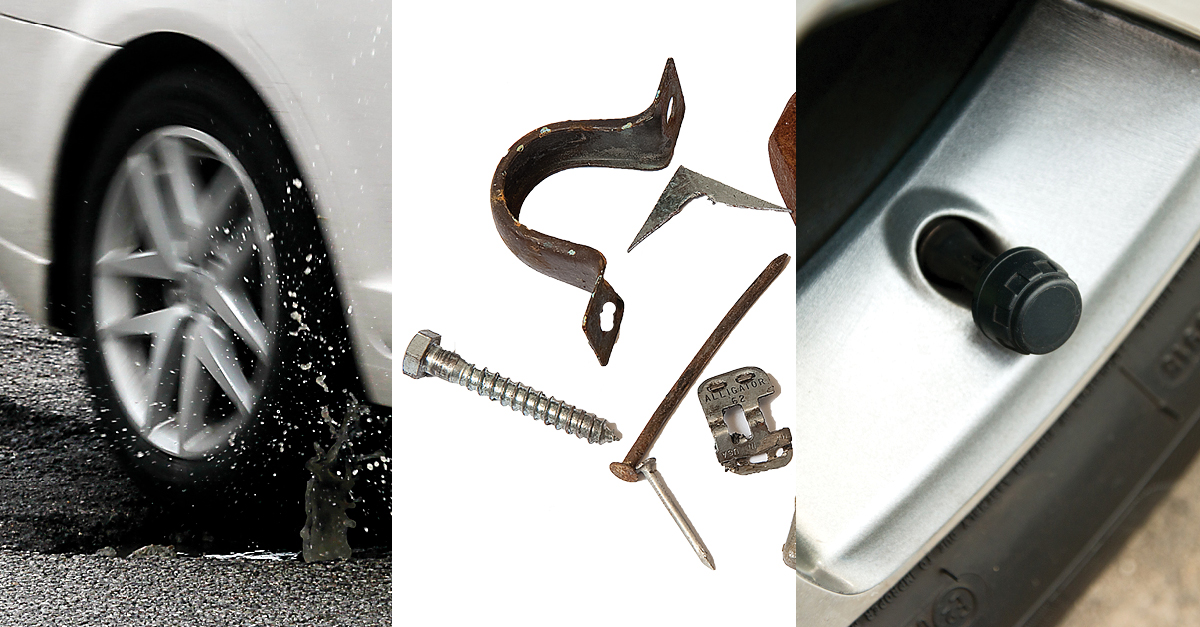How to Fix a Slow Leaking Tire
To fix a slow leaking tire, start by locating the source of the leak using soapy water or a tire pressure monitoring system. Once located, determine if the leak is due to a puncture, faulty valve stem, or wheel rim issue.
Repair the tire using a plug or patch kit for punctures, replace the valve stem if damaged, or have the wheel rim repaired by a professional if necessary. Regularly check the tire’s pressure and monitor for any reoccurrence of leaks to ensure safety on the road.
Remember to always follow proper tire maintenance practices to prevent future issues.
Locate The Leak
Discovering and addressing a slow leaking tire is crucial to keeping your vehicle safe on the road. By locating the leak, you can use a tire repair kit to fix the issue and prevent further damage. Regularly checking your tire pressure and addressing slow leaks promptly will help maintain safe and efficient driving.
Locate the Leak When you notice that your tire is slowly losing air pressure, it’s important to locate the leak and fix it promptly to avoid any further damage or inconvenience. A slow leaking tire can be caused by a variety of factors, such as a puncture from a nail or screw, a damaged valve stem, or even a small crack in the tire itself. In this section, we will explore two simple methods to help you locate the leak in your tire: visual inspection and using soapy water.Visual Inspection
One of the easiest ways to locate a tire leak is through a visual inspection. Start by examining the entire surface of the tire, paying close attention to any obvious signs of damage or foreign objects lodged in the tread. Look for objects like nails, screws, or other sharp debris that could have penetrated the rubber. Additionally, inspect the sidewalls for any cracks or bulges, as these could also be potential sources of the leak. If you notice a nail or screw, it’s important not to remove it just yet. Leaving it in place can help prevent a sudden loss of air pressure. Instead, take note of its location and mark it before moving on to the next step. This way, you’ll be able to find the exact spot later when you’re ready to fix the leak.Use Soapy Water
Another effective method to locate a tire leak is to use soapy water. This simple technique helps identify leaks that might not be visible to the naked eye. To start, mix a solution of mild detergent or dish soap with water in a spray bottle or bucket. Apply the soapy water solution to the entire surface of the tire, focusing on the tread area and valve stem. As the solution comes into contact with the leaking air, it will create small bubbles or foaming. Keep a close eye on the tire and look for any bubbles forming on the surface. Be patient and thorough with your inspection, as some leaks might be small and take time to manifest. If you spot any bubbles forming, you have successfully located the leak. Make sure to mark the area so that you can find it later when repairing the tire. Remember, the soapy water method can be used not only on the tread area but also on the sidewalls and valve stem. By using these methods of visual inspection and soapy water, you can quickly identify the source of the slow leaking tire. Once you have located the leak, you can proceed with the necessary repair or seek professional assistance if needed. Don’t ignore a slow leak, as it can lead to further damage or even a flat tire.
Credit: www.youtube.com
Remove The Tire
When it comes to fixing a slow leaking tire, the first step is to remove the tire. This is a crucial step in the process of addressing the issue and ensuring safe driving. Follow the steps below to effectively remove the tire.
Position The Jack
Firstly, find a sturdy and level surface to park your vehicle. Locate the jack point under the vehicle and position the jack securely.
Loosen The Lug Nuts
Using a lug wrench, loosen the lug nuts on the tire in a counter-clockwise direction. Make sure to loosen each lug nut without fully removing them.
- Position the Jack
- Loosen the Lug Nuts
| Step | Description |
|---|---|
| 1 | Position the Jack under the vehicle securely on a level surface. |
| 2 | Using a lug wrench, loosen the lug nuts in a counter-clockwise direction. |
By following these steps carefully, you can efficiently remove the tire and address the slow leaking issue. Remember to seek professional help if needed.
Repair The Leak
Patch The Tire
Using a tire patch is an effective way to seal slow leaks.
Use A Tire Plug Kit
Another option is utilizing a tire plug kit to fix the leak.

Credit: m.youtube.com
Reinflate And Reinstall
Need to fix a slow leaking tire? Learn how to reinflate and reinstall it quickly and easily with these helpful techniques.
Now that you have identified and fixed the slow leak in your tire, it’s time to reinflate and reinstall it. This step is crucial for ensuring your tire is back in optimal condition and ready to hit the road again. To help you through this process, we have outlined the necessary steps below.Check The Tire Pressure
Before reinflating the tire, it’s essential to check the tire pressure. Proper tire pressure is crucial for optimal performance and safety on the road. Start by referring to your vehicle’s owner’s manual or the inside of the driver’s side doorjamb for the recommended tire pressure specifications. Once you have the correct pressure value, follow these steps:- Park your vehicle on a level surface and engage the parking brake.
- Locate a reliable tire pressure gauge.
- Remove the valve cap from the tire’s valve stem.
- Press the gauge firmly onto the valve stem and read the pressure displayed.
- If the reading is below the recommended pressure, you will need to reinflate the tire.
Tighten The Lug Nuts
After ensuring the proper tire pressure, it’s important to tighten the lug nuts securely. Loose lug nuts can lead to dangerous situations while driving. Follow these steps to tighten the lug nuts properly:- Using a lug wrench or a socket wrench, turn each lug nut clockwise to tighten them.
- Tighten the lug nuts as much as possible without exerting excessive force.
- Use a torque wrench if available, following the specific torque specifications provided by the vehicle manufacturer.
- Work in a star or crisscross pattern to ensure even tightening.
- Once all lug nuts are tightened, check again to ensure they are secure.
Prevent Future Leaks
To prevent future leaks, it’s crucial to maintain good tire care habits. By staying proactive, you can extend the life of your tires, enhance safety, and save money.
Regularly Check Tire Pressure
Maintaining the correct tire pressure is essential for preventing slow leaks. You can use a tire pressure gauge to check the pressure at least once a month, including the spare tire. Refer to your vehicle’s manual for the recommended pressure level.
Avoid Road Hazards
Avoiding road hazards, such as potholes and debris, can help prevent damage to your tires that might lead to slow leaks. When driving, be mindful of road conditions and try to steer clear of dangerous obstacles whenever possible.

Credit: techtirerepairs.com
Frequently Asked Questions On How To Fix A Slow Leaking Tire
Can A Tire With A Slow Leak Be Repaired?
Yes, a tire with a slow leak can be repaired by a professional tire technician. Regularly check and maintain tire pressure for safety.
How Much Does It Cost To Fix A Slow Leak In A Tire?
Repairing a slow leak in a tire typically costs $10 to $20. It may vary based on the service provider.
Can You Drive On A Tire With A Slow Leak?
Yes, you can drive on a tire with a slow leak, but it is not recommended. Driving on a tire with low pressure can lead to reduced control and traction, increased fuel consumption, and potential tire damage. It is best to have the tire repaired or replaced as soon as possible.
Why Are My Tires Losing Air So Slowly?
Slow air loss in tires may be due to small punctures, valve leaks, or temperature changes. Regular maintenance can prevent these issues. Keep tires properly inflated to avoid excessive wear and maintain fuel efficiency. If problem persists, consult a professional for inspection and repair.
How Can I Tell If My Tire Is Leaking?
To check for a slow-leaking tire, look for any visible punctures or listen for hissing sounds.
What Are The Common Causes Of Slow-leaking Tires?
Slow-leaking tires can be caused by punctures, valve stem damage, or corroded wheel rims.
Can I Repair A Slow-leaking Tire Myself?
Yes, you can use a tire repair kit to fix slow-leaking tires, but seek professional help if unsure.
Conclusion
Taking immediate action to fix a slow leaking tire is essential for both safety and cost-effectiveness. By inspecting and locating the source of the leak, properly patching or replacing the tire, and maintaining the correct tire pressure, you can ensure smooth and worry-free drives.
Remember, regular tire maintenance is crucial for prolonging the lifespan of your tires and ensuring optimal performance on the road. Stay proactive and stay safe!

